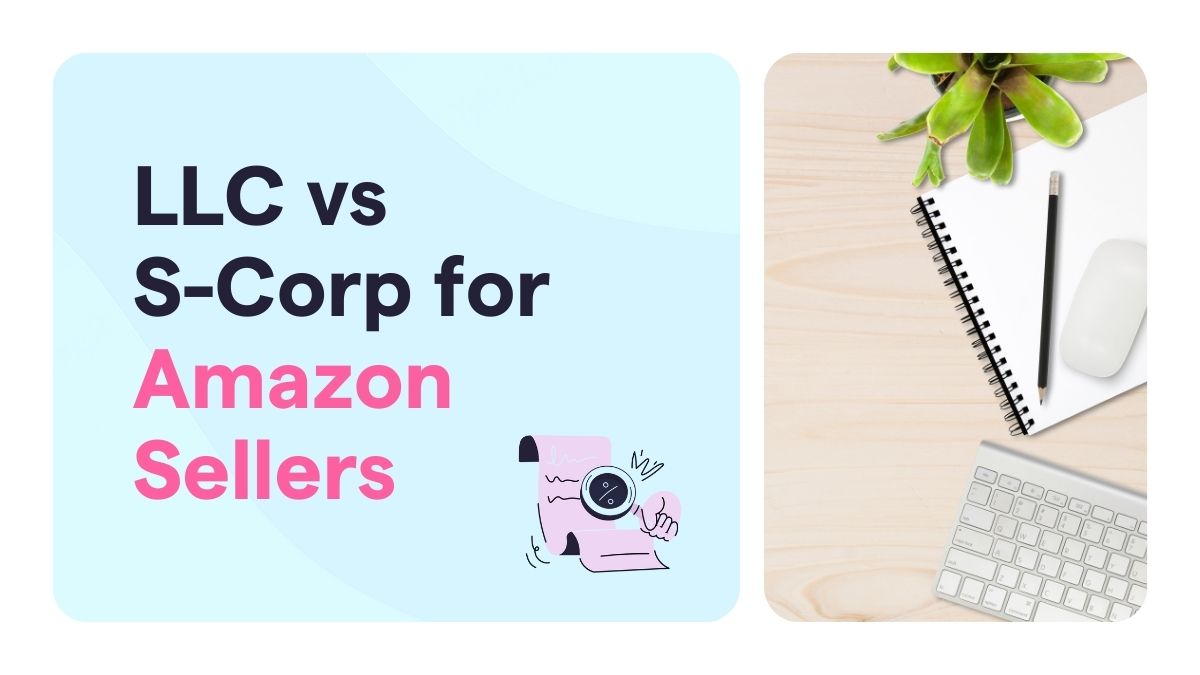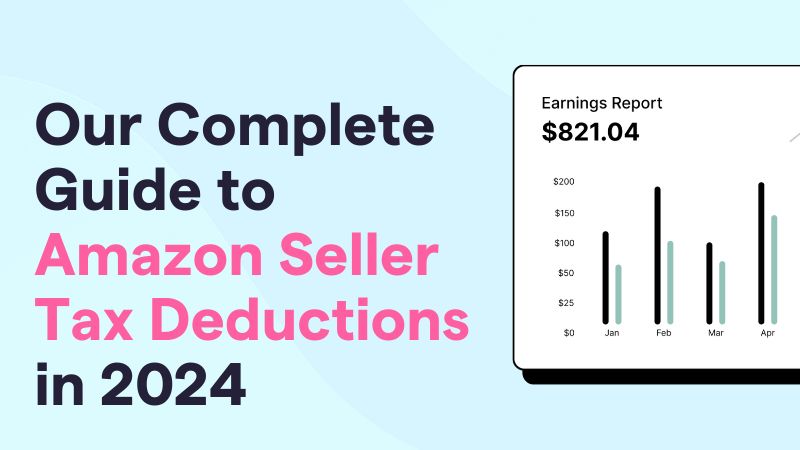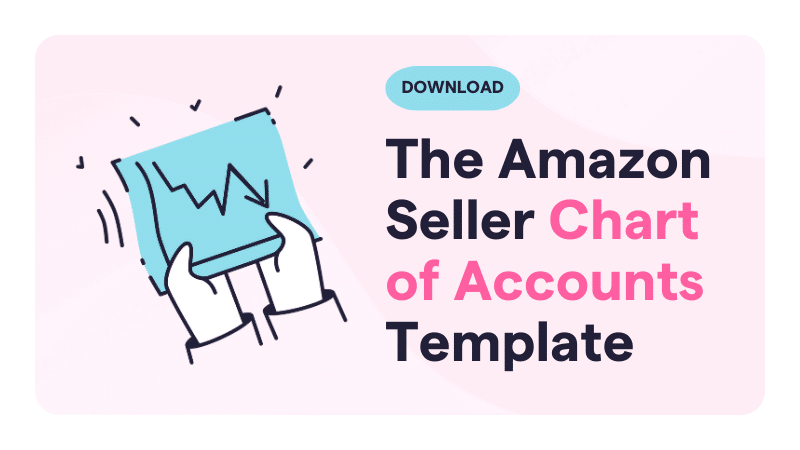Amazon FBA Product Research may sound like a simple task of searching for the right products and selling them on Amazon. Most sellers don’t realize that conducting product research is methodical, time-consuming, and can be a bit more complex than expected. There are a range of tools, tips and tricks that make the process much easier and help you to avoid potential pitfalls.
To help guide you in the right direction, this resource takes a look at Amazon FBA Product Research in 2020 and what makes it a critical step for your business’s success. Read on to find out more!
First, let’s look at the bigger picture
With Amazon attracting millions of entrepreneurs and existing retailers to list their products on the platform, the tech giant uses marketplace incentives to create a competitive environment that provides shoppers with the best prices and a variety of options in every category to choose from.
This is why Amazon is called “The Everything Store” – they literally sell everything. To provide the best shopping experience for consumers, Amazon ranks sellers based on a range of factors that impact the level of service that they provide (such as delivery times, defect rates and return rates).
You could say that Amazon is pretty popular – there are more than 5 million third party sellers worldwide, and Amazon’s share of the US eCommerce market is now 49%, or 5% of all retail spend! Trends are indicating that Amazon’s dominance will only become more prominent in the following years if all else remains equal.
Unlike eBay, Amazon also sells products on their own platform. For shoppers, this means great pricing and plenty of choice. For third party sellers, it means fierce competition.
Note: if Amazon is selling a similar product to yours in the same category, or if you find a product niche that Amazon is currently competing in, it’s a good idea to think twice before entering that market.
What makes Amazon FBA product research important?
vAmazon product research is your ticket to finding winning product ideas to sell on Amazon. In an ideal world, as a seller you would select products that are based on your interests or what you think would sell best.
Whilst that might have been a viable approach 5-10 years ago, taking this course is a very risky strategy in today’s eCommerce environment. Sure, you might stumble upon the right idea on your first try and transform your Seller Central account into a highly profitable business. Or you might find that the product(s) you’ve chosen have high competition, low demand and lots of alternatives.
Just because you love any particular item doesn’t necessarily mean that it is going to sell well on Amazon. To take the guesswork out of product research, it is best to make a set of criteria for your ideal product and use data to validate potential opportunities.
Amazon FBA product research arms you with the right knowledge while providing current market trend analysis through data gathering. The accumulated data is best used to drive your decisions. By looking at the right information and adopting a data-driven research approach, you may enjoy the following benefits:
- Generate higher sales with a better profit margin in return.
- Find the right suppliers.
- Source products that are easy to manufacture and with low competition.
- Find ideas for product development.
- Verify not only the seasonal products but the items with steady year-round market demand.
- Gauge your competition’s success.
Having said this, Amazon FBA Product Research is imperative because unlike other marketplaces, with Amazon FBA, each product can only be listed once.
“Car yards and fast food chains tend to open stores next to each other so that they can benefit from the promotion and hard work of their competition. In many ways, the same can be said for how Amazon sellers compete on an SKU level. Rather than digging a well in a desert, it’s more like competing for a place at the watering hole.”Source
Tip: As much as you can, avoid competing with Amazon. The struggle comes in as the company, in essence, is a giant merchant itself and its motivation is to look out for Amazon. If they decide to sell a product, it is almost guaranteed that they will win the buy box.
What type of FBA seller are you?
So, where do you start?
Essentially, you need to find the right products. The first step is understanding how you will bring products to market. By getting a better grip on the market mechanisms for your business, you can streamline the process of reaching your goals.
If you haven’t yet given thought to this question, here are the three broad categories that FBA businesses fall into:
- Retail Arbitrage.
- Resellers.
- Private Labellers.
Retail Arbitrage
This type of Amazon business is primarily concerned with finding opportunities where products can be bought from retail stores and sold on the platform for a profit.
“To determine whether there is an opportunity for arbitrage, resellers use barcode scanner apps on their phones. When a barcode is scanned, the app analyzes a range of factors such as competition for that SKU, likelihood of the item selling, sales volume and price trends to determine the best sell price, and probability of making a profit from the item in question.”Source
If the numbers stack up, retail arbitrage-ers will buy as much of the item as they can and send it to FBA warehouses for profitable resale on Amazon.
Useful barcode scanner apps include:
To learn more about successfully finding the right products and selling them on Amazon, check out this guide by The Selling Family.
Resellers

As online retailers, resellers fall into the same category as Amazon’s trading activities – and that of stores you can find at the local mall (except they are online).
The business model is simple: buy wholesale, sell retail.
Resellers add value by breaking bulk and providing convenience for shoppers that want a product now without buying 100 units. To some, this type of seller might not seem to be adding that much value in the scheme of things. However, they play arguably the most important role in the Amazon ecosystem. Resellers bring competition to the platform which helps to keep prices down and provide shoppers with more choice.
Tip: The key to succeeding as a reseller is winning the buy box. Why? Because more than 90% of sales on Amazon are made through the buy box.
There are a wide range of ways to succeed as a reseller. You can either choose to sell products that are already available on the platform, or contact businesses with great value offerings that don’t currently sell on Amazon and offer to bring their products to the world. Companies such as Export-X support local brands by providing software and services to help them sell on Amazon marketplaces throughout the world (with Export-X being a reseller).
Private Labellers

“Operating a private label Amazon business involves taking existing products and adding your own brand to them. Lots of manufacturers offer “white label” products whereby you can re-brand their product to your own requirements.”
Private labellers add value by augmenting product offerings. There is a broad spectrum of this type of sellers – from those who simply add their logo to an existing standard product – to companies that develop innovative, world-beating goods which solve specific problems or create new opportunities for users.
As they deal directly with manufacturers, private labellers have a high degree of flexibility to customize their offerings based on feedback and market demand. By ‘cutting out the middleman’, profit margins tend to be higher.
To conduct product research as a private labeller, it is a good idea to look for categories that have:
- High demand/bad reviews.
- Strong sales/poor marketing.
- New markets/immature listings that haven’t yet gained proper traction.
If you still aren’t sure which type of FBA seller you’re best suited to becoming, check out this article from SamPriestly.com which features detailed pros and cons backed up by hypothetical days in the life of each kind of seller for you to have a better understanding of each category.
How to do Amazon FBA product research – step by step:
Here’s our favourite method of conducting Amazon FBA product research. Although it is not the only way to decide which products to sell on Amazon, we recommend this method because our clients have found it to be the most effective way to narrow down exactly what to sell.
Step 1: Decide which kind of seller you are going to be (as mentioned above)
When you’re considering which path to take, it’s important to keep your endgame in mind. Where do you want to take the business? Are you planning to sell your Amazon FBA business in the future? Maintain a small lifestyle organization to support your passions? Or perhaps you’re thinking about building an eCommerce empire.
By starting with the end in mind, you can work backwards to reverse engineer the best course of action to make it happen. For more information on the topic of selling your Amazon FBA business, check out this free guide by A2X.
In general, retail arbitrage is the easiest course to

Quite often, people will dip their toes in the water by starting out with retail arbitrage, then migrate to reselling or developing private label products once they get more comfortable with the process of selling on Amazon.
Step 2: Set your product sourcing criteria
Before you can understand what a good opportunity looks like, you need to establish a set of criteria that defines what you’re looking for and filters out items that don’t meet your requirements.
Everyone has a different set of criteria, and there is no one right way of going about it. Some sellers choose to distribute light, medium-value, niche products with low competition. Other sellers go for large and bulky items where there are less people vying for the business. On the other hand, it is common for larger resellers to compete in the realm of high volume, high competition items such as toiletries and linen.
By starting with your endgame in mind, you will have a better idea of the results that you are looking to achieve. This will guide your sourcing criteria.
Here are some factors to consider:
- Price point – private labellers often advocate for selling items around the $20-150 range. Anything over $150 is hard to convince people to impulse-buy from brands they have never heard of.
- Competition – the lower, the better. You can gauge this by looking at the number of reviews on top selling products.
- Demand – how many units are ordered on average each month. You can gauge this by using the sales estimator tool to get a rough idea of how many units the top ranking items are selling.
- Seasonality – is the demand consistent throughout the year, or do orders tend to spike at a particular time such as Christmas? You can gauge seasonality by searching the relevant keywords into Google Trends.
- Weight – the heavier and bulkier the item, the more it is going to cost to ship. Small and light products are the best, but tend to attract the most competition.
- Profit margin – how much margin can you make from the product? Private labellers tend to make a higher margin than resellers, but attract more unexpected costs such as product testing, photography, promotion and development.
StartupBros recommends the following criteria when selecting private label products to sell:

<Insert this image>
Step 3: Use data to conduct product research and find opportunities for items to sell
The following tools are useful for conducting product research:
- StartupBros FBA Product Planner – this provides a comprehensive set of metrics to compare each product. Provided as part of the StartupBros FBA training programme.
- Viral Launch Amazon Product Finder – this is just a part of a comprehensive suite of tools that recommends product ideas and helps you by ranking each opportunity.
- JungleScout Web App and Chrome Extension – this helps Amazon sellers and affiliate marketers to research, spot the hot products on Amazon, tracking, and understand trends. Out of all the tools available, we have found Jungle Scout to be the most up-to-date and cost effective. Check out this guide for more information on how to use their tools.
Struggling to find product ideas? Here are some places to look for inspiration:
- Amazon’s best-seller list.
- Amazon storefronts.
- Exploring physical retail stores.
- Amazon’s Movers & Shakers.
- Browsing products on Pinterest.
- Trending Shopify stores.
- Looking at the eBay’s trending list.
- Checking the section – “Customers Also Bought” below various items of interest.
- Browsing through AliExpress’ weekly best-sellers list.
- Amazon’s product sub-tiers.
Just remember to stick to the criteria you selected in the previous section.
Step 4: Contact potential suppliers
Once you have found an opportunity that meets your sourcing criteria, it’s time to establish supply arrangements. For private label products, the most common place to look is Alibaba. Some merchants also use other sourcing websites such as Global Sources.
If you are looking to be a reseller, the first port of call should be contacting the manufacturer or brand that represents the products you wish to sell. However, don’t be afraid to get creative here. There are many different ways of sourcing products – such as talking to distributors and
working with local contract manufacturers.
Useful tips for a better Amazon FBA Product Research
Once you have listed the potentially profitable products you want to sell that are hot on Amazon, it helps to do a deep analysis on the similar items if they are making enough sales. Then, you can look into their reviews if they are doing well and perform the keyword search volume test.
Take your time when doing your Amazon FBA product research. Here’s an interesting Amazon Product Research Checklist for beginners. It talks about sales prices, profitability/healthy profit margin, high demand, low competition, and even questions to ask yourself about product quality.
While you’re at it, here are some of the products that are commonly recommended to avoid:
- Digital products such as cell phones, apps, cameras, and other complex products such as painting or jewelry. These require a crazy amount of variations that will add complexity to your business, complicated shipping, and manufacturing details.
- Likewise, you may wish to avoid products that you eat or use on your body such as foods, lotions, creams, nutritional supplements as they tend to have potential liabilities. For Amazon Restricted Categories, here’s a guide worth your time.
Take action today
The most common mistake we see sellers making is failing to take action. So many people are looking for that perfect opportunity, but aren’t prepared to settle for a good opportunity. The trick here is to learn through action. Put a plan in place, set out a roadmap and stick to it.
In the beginning, start with a small amount of capital, and focus on learning. Once you know what you’re doing, the world is your oyster!
For a more detailed guide on how to become an Amazon FBA seller, check out our complete guide on how succeed with Amazon FBA in 2020!
')}




